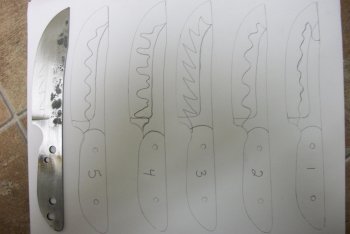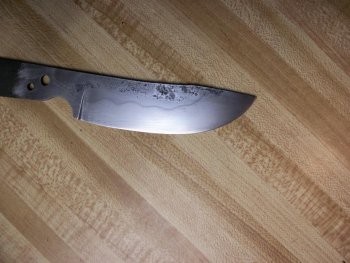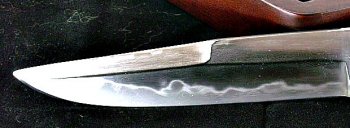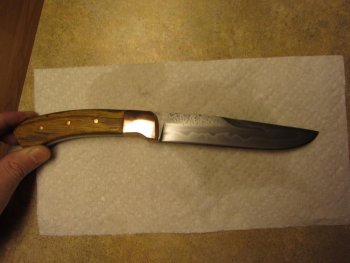the thing you are balancing with the decision of water versus oil is that water gives more activity but it is riskier. So, you leave the blade thicker and it can deal with the stress better. But, with a thicker blade, you lose more of the ashi and activity in the hamon when you grind down to final size. The interrupt quench gets all of the same activity as just water, because it really is the first second in the quench that sets up the hamon. Also, the interrupt is less brutal on the steel, because the actual transformation to martensite happens later in the cooling process (I don't remember the ms temps offhand, but it is somewhere between 900F and 600F for the steels we use).
So, we need to get below 1100 (and down close to 900) as fast as possible (changes again somewhat with the steel, I am not referring to charts, just giving general info). We have to get below 1100 (or maybe even close to 900) so fast to get full hardening and dogde pearlite. But, after we get there, we want to slow things down so that the transformation into martensite can be done relatively slowly. That way, the steel is not tearing itself apart as it changes molecular arrangement and density.
Why did I go through all of that again when you already know it - just to emphasize that water-into-oil and water alone have the same effects in terms of hamon activity. But, the resulting knife may have less remaining activity with water because you may have been forced to leave the blade thicker to distribute the stresses. So, with water alone, some of the good activity can be lost.
What I want to know is whether this same basic process means that the effects from Parks or simillar stuff may be just as good as water-interrupt. You lose some in initial cooling, but you can leave the blade closer to final dimensions, so you get to retain more of the activity without loss to grinding. So, on balance, how does this all work out?
I gotta start my knife, too.
kc
 and you already have one of mine from last year.
and you already have one of mine from last year. 






